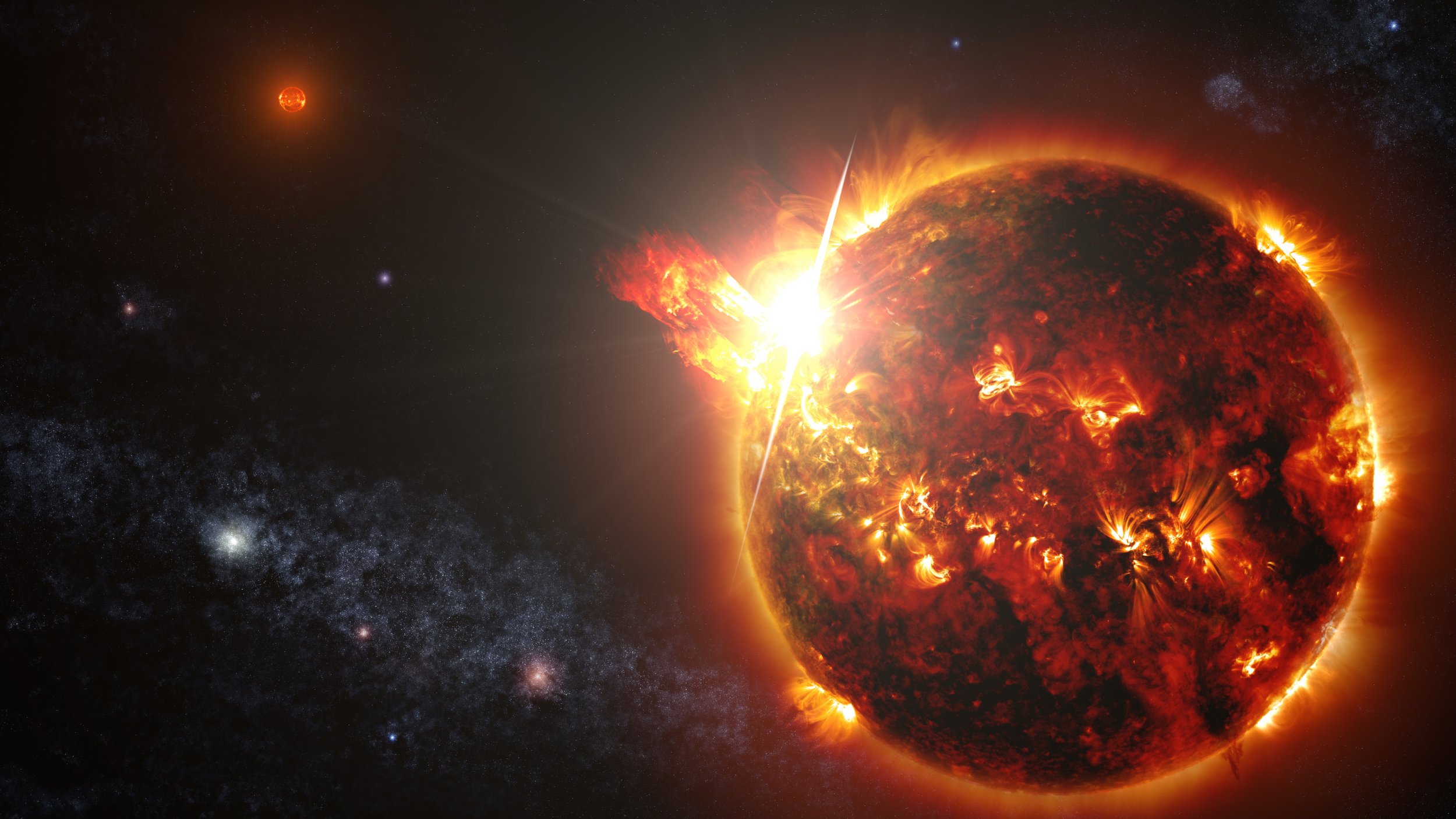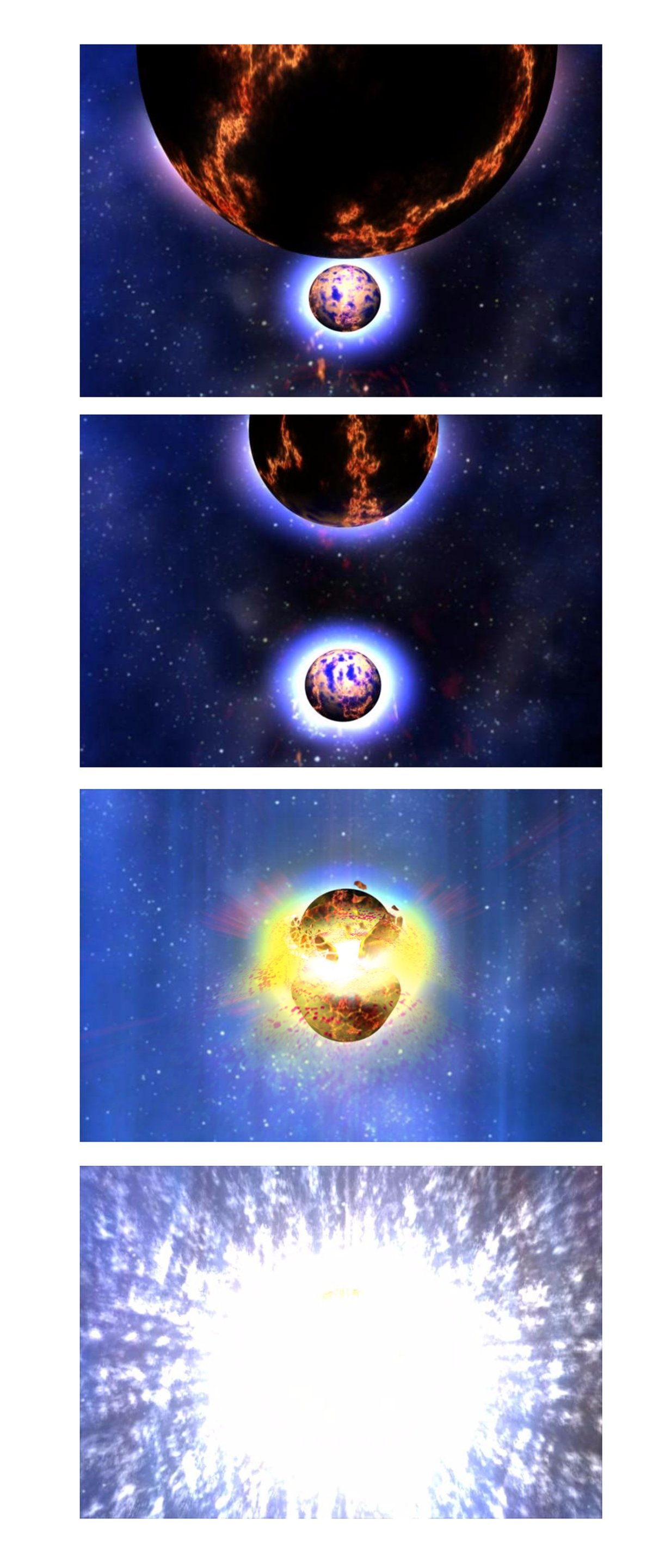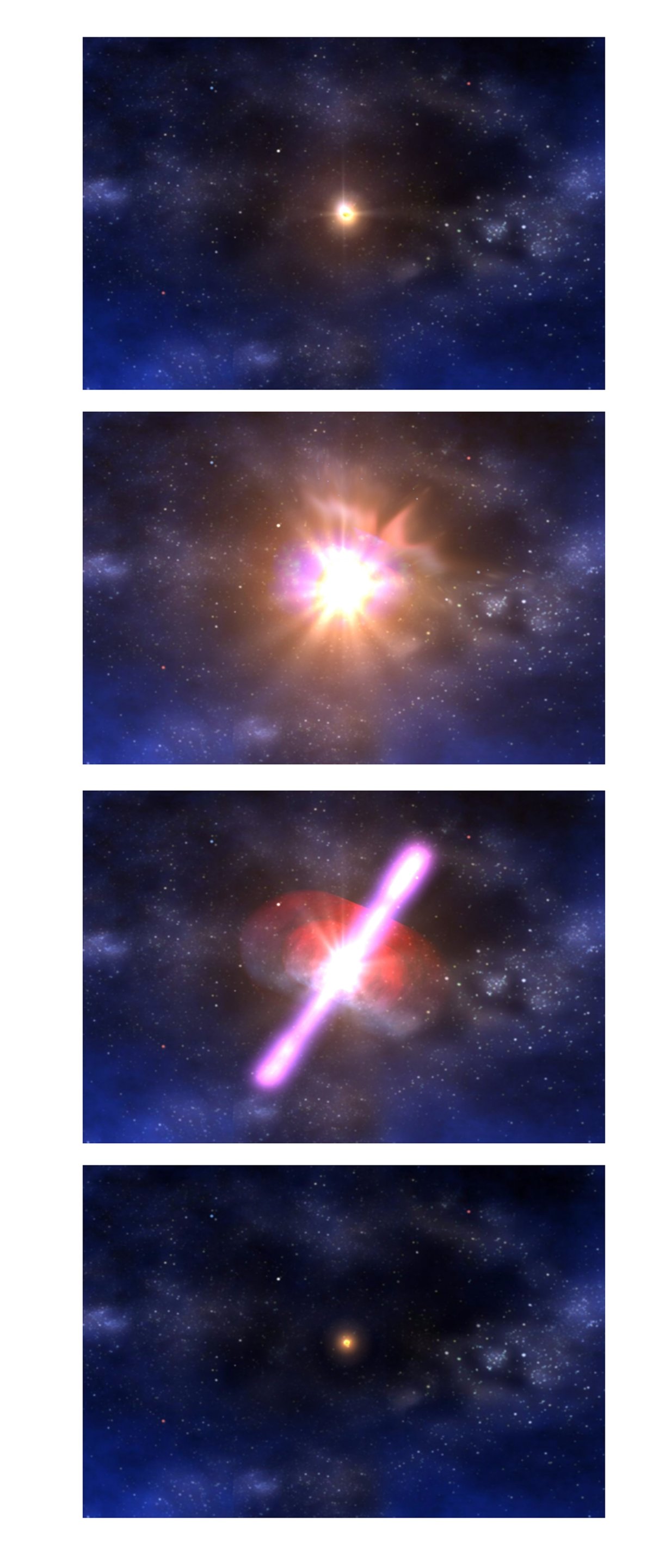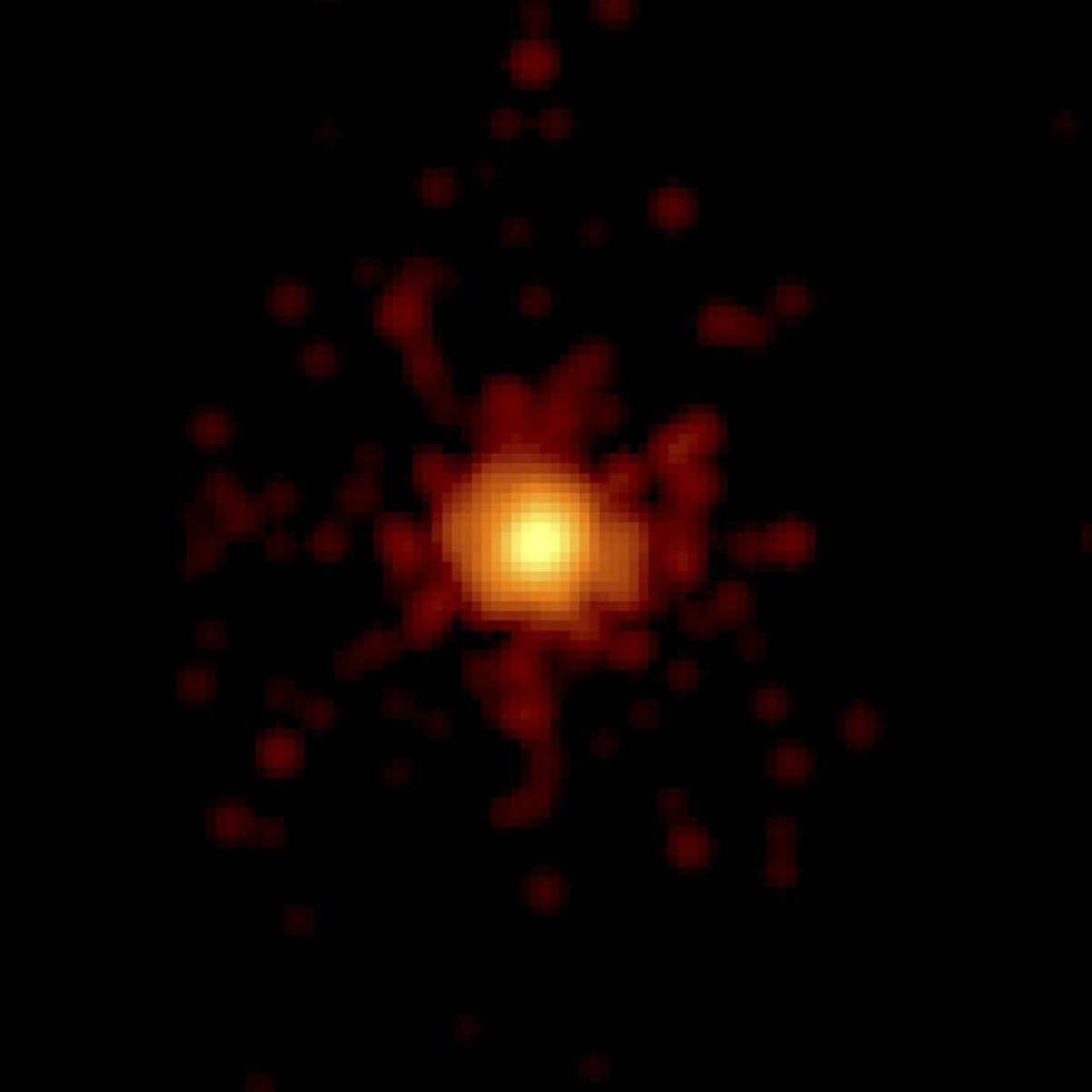
Ten years ago Thursday, NASA launched the Swift spacecraft, a satellite designed to help scientists observe and study gamma ray bursts.
Because gamma ray bursts are so bright, they "provide a tool to look much further into the universe than you can with any other type of telescope," Neil Gehrels, the principal investigator for NASA's Swift mission, tells Newsweek. "Astronomers have a lot of questions about what the universe was like after the big bang," he says, including: When did the first stars form? How massive were they? How long did they live?
Over the past 10 years, Swift—which is a collaboration of scientists in the U.S., U.K. and Italy—has helped begin answering these questions as the larger scientific community tries to understand "how the universe evolved from [the] big bang to how we see it now."
There are two basic types of gamma ray bursts, long and short. A long burst is thought to be caused by the collapse of a massive star at the end of its life and a short burst is thought to be the result of two neutron stars colliding.
Both "represent the cataclysmic death of something," Julian Osborne tells Newsweek. Osborne is part of the U.K. team at the University of Leicester that provided some of Swift's equipment and now runs the U.K. Swift Science Data Centre.
Gehrels calls Swift an "astronomical robot"; once its Burst Alert Telescope catches an explosion, it can quickly and autonomously reposition itself so that the two other instruments onboard, an X-ray telescope and an ultraviolet-optical telescope, can gather images and data to send rapidly back to Earth.
"That's why it's called Swift, and it is swift," Osborne tells Newsweek. Most satellites require control from the ground and move at a much slower pace, Osborne says. With Swift, scientists can make adjustments almost immediately, which means they can gather more useful data, more efficiently than with other satellites.
"All of this is unique to Swift, which was launched 10 years ago," Osborne says. "Nothing comparable has been launched since then,"
Swift has captured a series of impressive phenomena. The highlights of its first decade in space include:
The First Identified Short Gamma Ray Burst (2005)
Roughly six months into its mission, Swift helped scientists identify for the first time ever the precise location of a short gamma ray burst, which lasted only about 50 milliseconds. Previous instruments could not operate fast enough to catch such a short event, says Osborne.
Because "neutron stars take a long time to form," he says, scientists would "expect short gamma ray bursts to come from older galaxies with no recent star formation." When Swift first captured the location of a short gamma ray burst in 2005, it was a "scientific verification of the model."


The Most Distant Objects in the Universe (2009)
When Swift was about five years old, it discovered two long gamma ray bursts that were among the most distant objects ever to be observed. The stars that imploded were some of the earliest formed, just a few hundred million years after the big bang, Gehrels tells Newsweek. To put that in context, the big bang occurred roughly 13.7 billion years ago. In other words, those stars exploded only 3 or 4 percent into the universe's full timeline, says Osborne.
"The significance of that is these are the most distant objects that are known by any astronomical technique," Gehrels says. The scientists were able to use the light from gamma ray bursts to study distant regions of the universe where early stars had formed. The faraway bursts gave them a window into the universe's infancy.
Black Hole Swallows a Star (2011)
In 2011, scientists observed an event much longer than a typical gamma ray burst, emitting light for a full day. Today, they believe they were watching a "title disruption event," a black hole at the center of a nearby galaxy shredding a star whose orbit had been disturbed, causing it to wander too close, Osborne explains. Researchers think they have now seen a few additional events they suspect might be "title disruption events," Gehrels says.
Brightest Gamma Ray Burst Ever Observed (2013)
Last year, Swift, in collaboration with NASA's Fermi Gamma-ray Space Telescope, captured the brightest gamma ray burst yet. Gehrels says it produced "by far the best data set we've gotten from a gamma ray burst," which helped scientists learn about the physics of the explosion process and challenged standard models.

Red Dwarf Flare (2014)
Earlier this year, Swift "detected the strongest, hottest, and longest-lasting sequence of stellar flares ever seen from a nearby red dwarf star," according to a NASA press release. The flare, Gehrels says, was similar to what might happen on the surface of the sun, but 1,000 times brighter.
"At its peak, the flare reached temperatures of 360 million degrees Fahrenheit, more than 12 times hotter than the center of the sun," according to the NASA press release.
In its decade at work, Swift has been a pioneer of a new field of research called time-domain astronomy, Gehrels tells Newsweek, which studies variable, transient phenomena. More recently, Gehrels and his team have been accepting requests from other researchers looking to leverage Swift's abilities for their own work. Scientists will celebrate 10 years of Swift discoveries next month at a meeting at Rome's Sapienza University, December 2 to 5.
In a recent NASA review of its missions, Gehrels says, Swift took the No. 1 ranking. The mission is "10 years old and still coming up at the top."
Uncommon Knowledge
Newsweek is committed to challenging conventional wisdom and finding connections in the search for common ground.
Newsweek is committed to challenging conventional wisdom and finding connections in the search for common ground.
About the writer
Stav is a general assignment staff writer for Newsweek. She received the Newswomen's Club of New York's 2016 Martha Coman Front ... Read more
To read how Newsweek uses AI as a newsroom tool, Click here.








